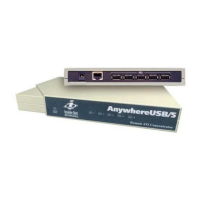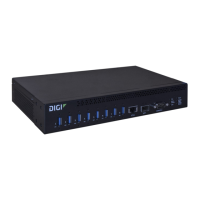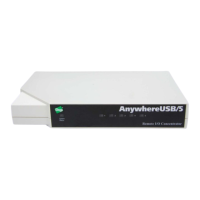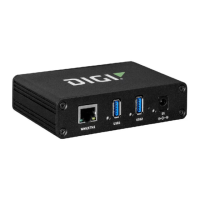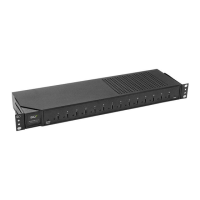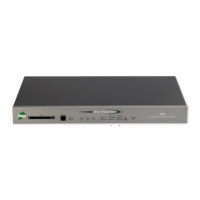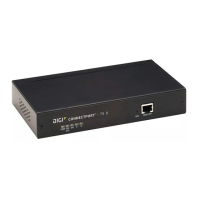Services Configure DNS
AnywhereUSB® Plus User Guide
239
l
A single IP address or host name.
l
A network designation in CIDR notation, for example, 2001:db8::/48.
l
any: No limit to IPv6 addresses that can access the DNS service.
d. Click gagain to list additional IP addresses or networks.
n
To limit access to hosts connected through a specified interface on the AnywhereUSB
Plus device:
a. Click Interfaces.
b. For Add Interface, click g.
c. For Interface, select the appropriate interface from the dropdown.
d. Click gagain to allow access through additional interfaces.
n
To limit access based on firewall zones:
a. Click Zones.
b. For Add Zone, click g.
c. For Zone, select the appropriate firewall zone from the dropdown.
See Firewall configuration for information about firewall zones.
d. Click gagain to allow access through additional firewall zones.
5. (Optional) Cache negative responses is enabled by default. Disabling this option may improve
performance on networks with transient DNS results, when one or more DNS servers may have
positive results. To disable, click Cache negative responses.
6. (Optional) Query all servers is enabled by default. This option is useful when only some DNS
servers will be able to resolve hostnames. To disable, click Query all servers.
7. (Optional) Rebind protection, if enabled, prevents upstream DNS servers from returning
private IP addresses. To enable, click Rebind protection.
8. (Optional) Allow localhost rebinding is enabled by default if Rebind protection is enabled.
This is useful for Real-time Black List (RBL) servers.
9. (Optional) To add additional DNS servers:
a. Click DNS servers.
b. For Add Server, click g.
c. (Optional) Enter a label for the DNS server.
d. For DNS server, enter the IP address of the DNS server.
e. Domain restricts the device's use of this DNS server based on the domain. If no domain are
listed, then all queries may be sent to this server.
10. (Optional) To add host names and their IP addresses that the device's DNS server will resolve:
a. Click Additional DNS hostnames.
b. For Add Host, click g.
c. Type the IP address of the host.
d. For Name, type the hostname.
11. Click Apply to save the configuration and apply the change.
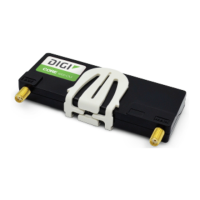
